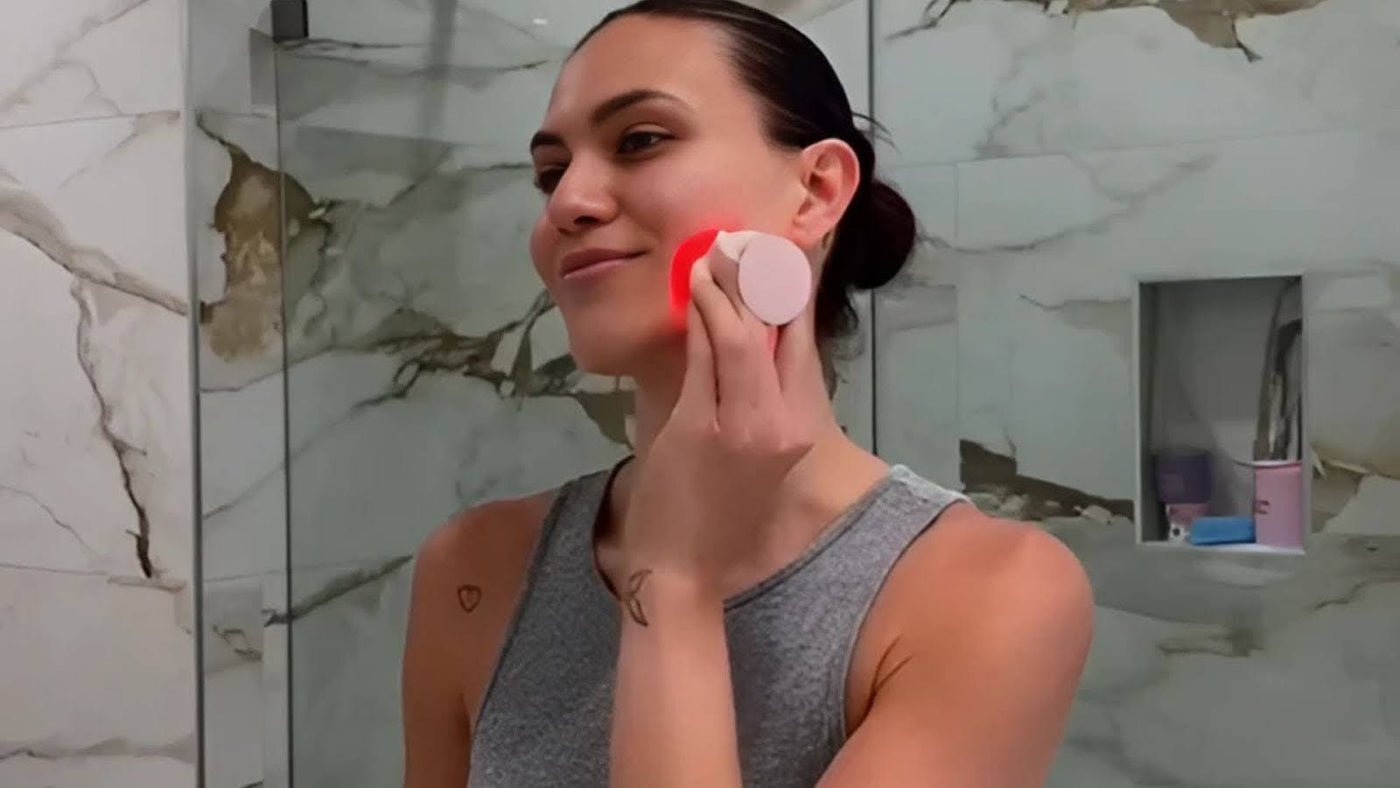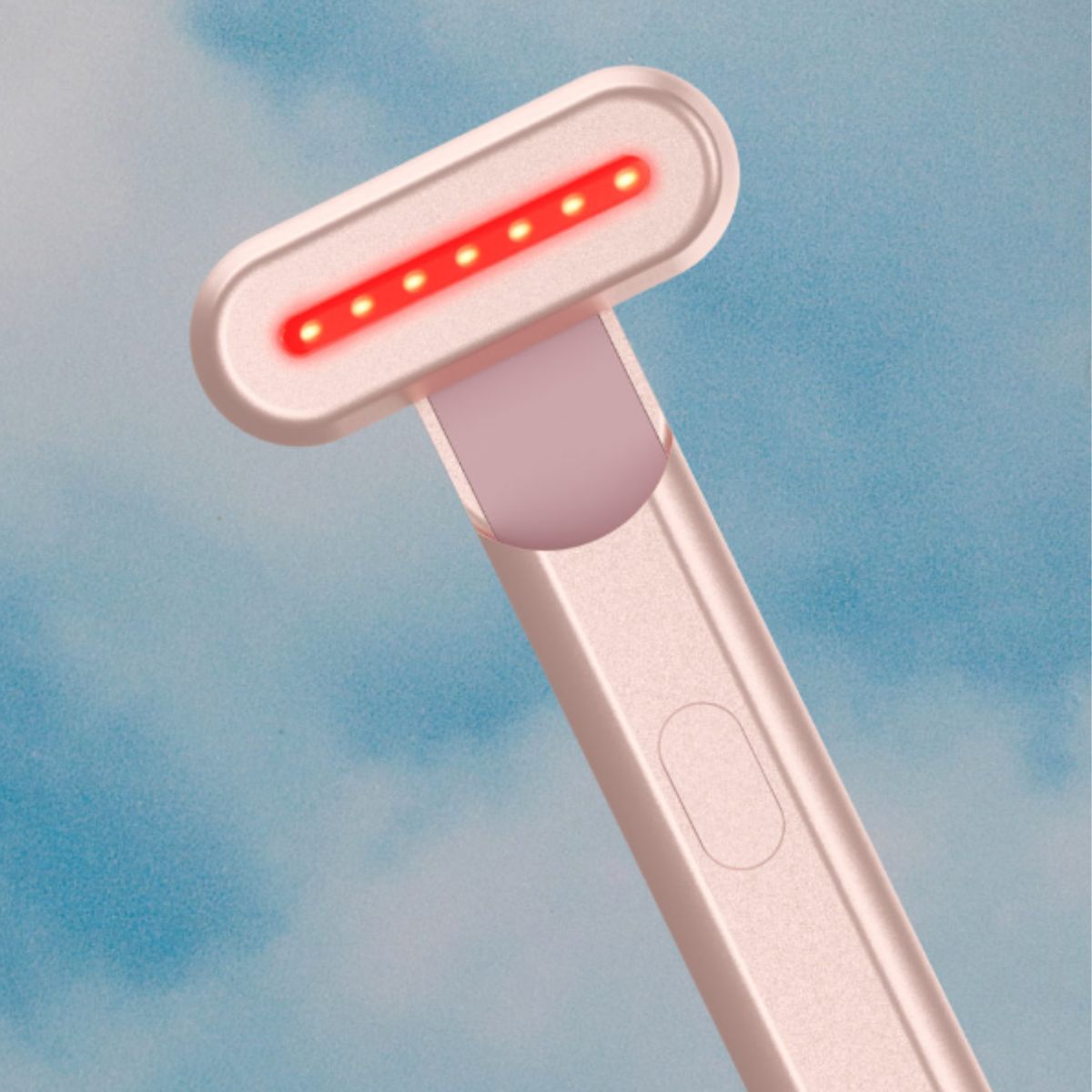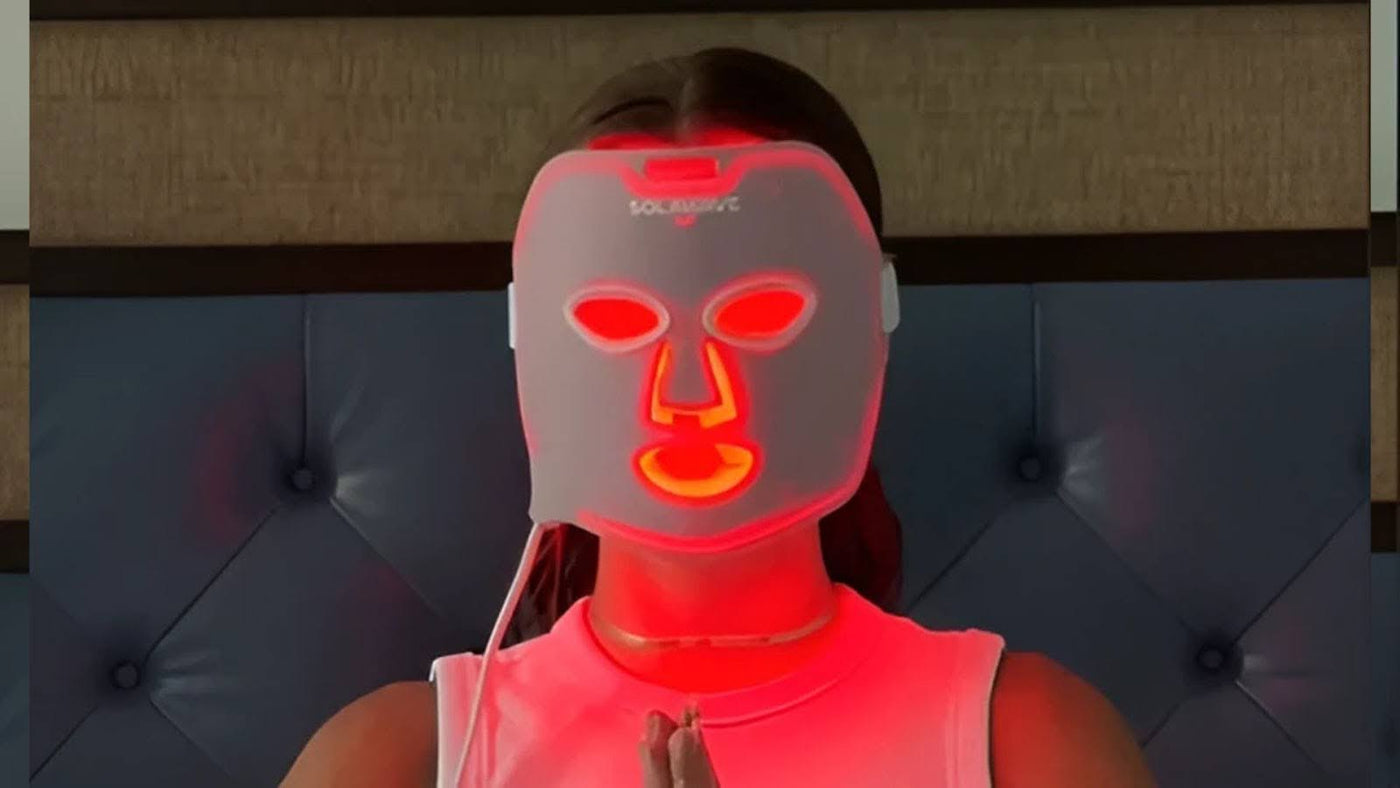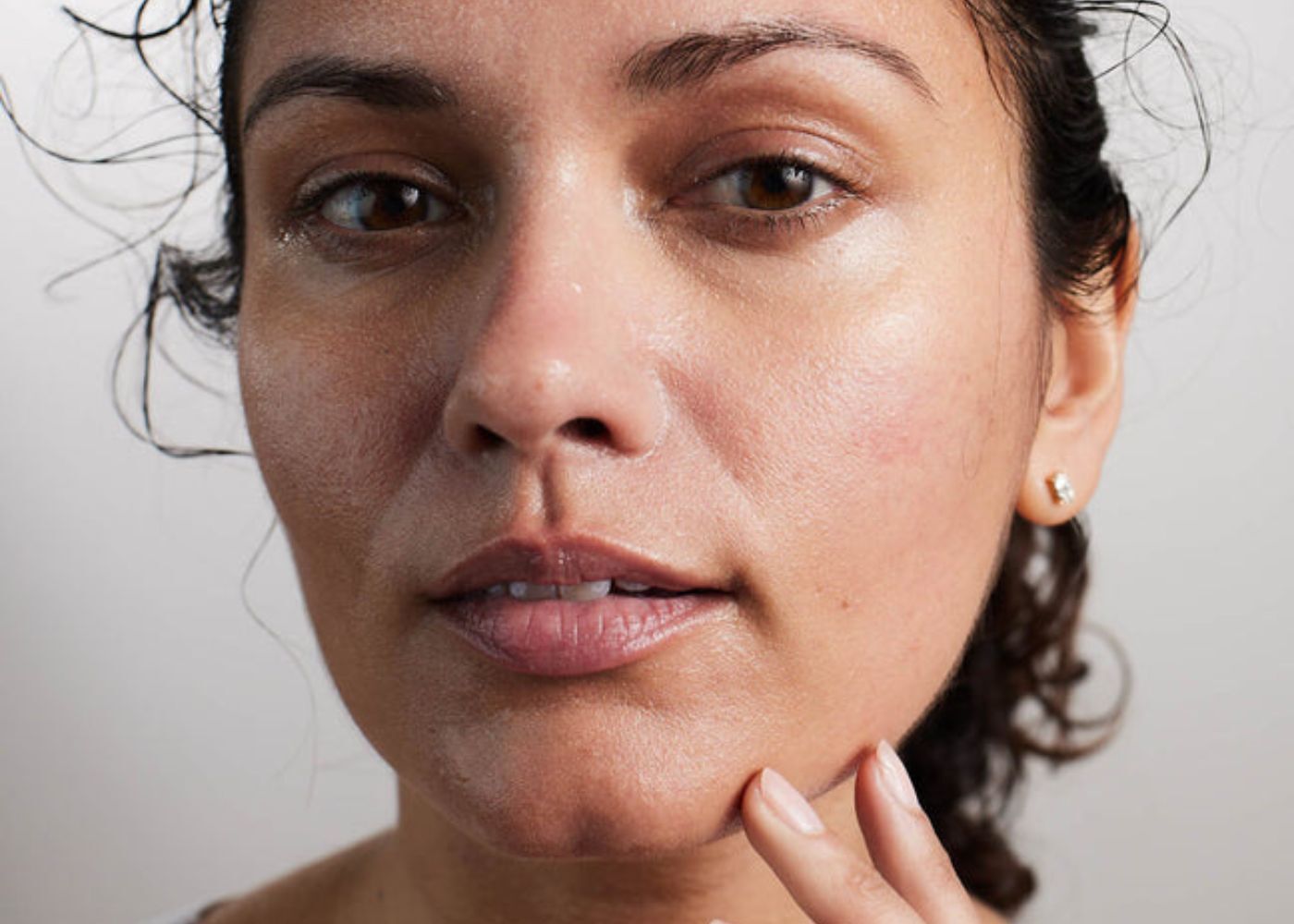 Scars
Scars

BLOG / Scars
/ Using Red Light Therapy on Scars: A Step-by-Step Guide
Using Red Light Therapy on Scars: A Step-by-Step Guide
John Tsenekos
September 10, 2023
10 MINS READ
Scars are an unavoidable part of life that can come from various sources—be it a simple fall, a surgical procedure, or acne. Beyond the physical, these scars often carry emotional weight, affecting how people view themselves. This article aims to explore an innovative treatment that has been gaining attention: red light therapy for scars. Here, you will find information about how scars form, the science behind red light therapy, and a step-by-step guide on how to use this therapy to treat your scars.

Understanding Scars
What Are They?
Scars are marks left on the skin as they heal from an injury by forming fibrous tissue. This process is the body's natural response to repair the damaged skin. Depending on the nature and severity of the wound, scars can manifest in different forms. Hypertrophic scars, for instance, are raised and remain within the boundaries of the original wound. They often appear red and are rigid to the touch due to the excessive amounts of collagen that the body deposits in an attempt to heal the wound. On the other hand, keloid scars are more severe and grow beyond the initial injury site. They can be itchy or even painful and are more common in individuals with darker skin tones. Atrophic scars, lead to depressions in the skin. These are typically associated with acne or chickenpox, where the healing process leads to a loss of tissue, resulting in a sunken appearance. Understanding these different types of scars is essential for effective treatment and management, as each type responds differently to various therapies and interventions.
Causes of Scars
They can arise from multiple sources, most commonly due to injuries, such as cuts or bruises, surgical interventions, or burns from exposure to heat or chemicals. Each cause leads to a different type of scarring, influencing the skin’s healing process. Surgical scars are typically straight and are confined to the area where the incision was made, often planned to be as minimal as possible. Burns, however, might cause larger, more irregular scars due to the extensive damage that affects deeper layers of the skin. Besides these, even minor skin conditions like acne can lead to scarring.
Acne, a common skin condition, can also leave behind noticeable scars, especially if it's severe or if the pimples are picked or squeezed. Because of this, many researchers and skincare professionals have begun to look into the benefits of red light therapy for acne scars. The idea is to find more effective ways to reduce or even eliminate these marks that acne can leave behind. Understanding these various causes is critical in adopting preventive measures or seeking appropriate treatments to minimize scarring. Awareness and prompt care can significantly reduce the severity of scars and improve skin health.
Emotional Implications
Scars are more than just visible alterations to the skin; they also embody profound emotional ramifications for many individuals. These marks often go beyond the surface, touching the psychological and emotional well-being of those who bear them. Below is an exploration of the emotional effects that scars can have:
- Reminders of Trauma: Scars can act as vivid and enduring reminders of past traumatic experiences. Each scar may represent a specific event, such as an accident, surgery, or a violent encounter, making it difficult for individuals to move past the incident. The visibility of these scars can trigger recurrent emotional distress, anxiety, or flashbacks, especially if they are related to particularly painful or life-altering events. This continuous reminder can hinder the emotional healing process, leaving individuals in a perpetual state of reliving their trauma.
- Impact on Self-Esteem: Many people may feel a sense of loss of their former unscarred self, which can lead to a profound decrease in self-esteem and confidence. This altered self-image can become a source of shame or embarrassment, particularly if the scars are in visible areas that draw public attention. The struggle with accepting their changed appearance often requires emotional resilience and can sometimes necessitate support through counseling or support groups.
- Social and Professional Consequences: The psychological impact of scars can extend into social and professional realms. Individuals may become self-conscious or withdrawn, fearing judgment or stigma from others based on their appearance. This can lead to diminished social interactions, isolation, and significant difficulties in forming or maintaining personal relationships. Professionally, individuals may face barriers if their scars are perceived negatively, affecting job opportunities or advancements. Their general quality of life may be further impacted by this social reaction, which may serve to perpetuate feelings of inadequacy and rejection.
Recognizing these profound impacts underscores the necessity for both emotional support and broader societal understanding. Communities and professionals need to foster environments where individuals with scars can feel accepted and supported. By promoting a more inclusive and understanding attitude towards scars, society can help alleviate some of the emotional burdens carried by those affected.
Red Light Therapy: An Innovative Treatment
What is Red Light Therapy?
Red light therapy is an innovative and non-invasive procedure that employs the power of low-level red light to address a range of issues like skin conditions, muscular discomfort, and even some mood-related problems. This treatment method was first observed for its impressive ability to hasten plant growth. Over time, researchers and experts recognized its potential in skincare and promoting the healing of wounds.
The Science Behind Red Light Therapy
Understanding the science of red light therapy is truly intriguing. The therapy delves deep, working its magic at the cellular level. It chiefly enhances the performance of mitochondria, which are like tiny power plants within our cells, producing energy.
Moreover, red light therapy plays a pivotal role in boosting collagen production, a fundamental building block of our skin. It also promotes the repair of cells. Considering these remarkable effects, it's no surprise that experts see great potential in using red light therapy for scar tissue.

Benefits of Using Red Light Therapy for Scars
Non-Invasive
One of the standout features of red light therapy on scars is its non-invasive nature, offering a significant advantage for individuals who are apprehensive about surgeries or injections. This therapy involves the use of wavelengths of red light to treat various skin issues, including scarring, without the need for physical incisions or injections. The approach allows for a pain-free and accessible treatment option that can be administered in a professional setting or even at home with the right equipment. The absence of invasive procedures reduces the risk of infection and other complications associated with surgical interventions. Furthermore, this non-invasive method does not require recovery time, which means that individuals can continue with their daily routines immediately after treatment.
Speeds Up Healing
Light exposure promotes increased circulation and cell regeneration, which are crucial for repairing skin tissue and enhancing the healing process. For those dealing with new scars, RLT provides a promising solution by reducing the healing time and improving the overall appearance of the scarred area. The therapy is especially beneficial for managing and healing surgical scars, injury-induced scars, or scars from skin conditions such as acne. By encouraging quicker cell turnover, red light therapy for the face helps in fading scars more rapidly than they would naturally, making this method a valuable tool in scar management and skin health maintenance.
Aids in Collagen Production
Collagen, the protein responsible for giving skin its structure and firmness, tends to decrease with age and damage. By stimulating collagen synthesis, RLT helps improve the texture and appearance of scars, making them less noticeable over time. This aspect of RLT is particularly beneficial for facial scars, where smoothness and skin texture are more visible and can greatly impact an individual’s self-esteem. The increase in collagen not only helps reduce the appearance of scars but also enhances the overall skin quality by making it more resilient and youthful. As a result, red light therapy is increasingly popular for facial treatments, where its benefits extend beyond scar reduction to overall skin rejuvenation.
Reduces Inflammation and Pain
RLT is effective in reducing inflammation and pain associated with scarred tissues, making it a valuable treatment for those experiencing discomfort from scars. This is particularly beneficial for chronic scars that become painful or inflamed due to environmental factors or physical stress. RLT’s ability to alleviate discomfort allows individuals to engage more comfortably in daily activities, providing relief from the persistent pain that can accompany scarred tissues. By reducing both the physical and visual symptoms of scars, red light therapy offers a holistic approach to improving skin health and enhancing the quality of life for those affected by scarring.
Step-by-Step Guide to Using Red Light Therapy for Scars
Ready to give red light therapy a try? This part will walk you through the practical steps of using RLT for scar treatment. You'll learn about the equipment needed, the recommended frequency and duration of sessions, and tips for monitoring your progress.
- Necessary Equipment: Effective RLT requires appropriate equipment. For individuals considering at-home treatment, a variety of devices are available, ranging from professional-grade machines to more accessible options such as handheld red light therapy wands. These red light wands are particularly popular for their ease of use and affordability. As emphasized before, these devices typically emit a specific wavelength of light that is believed to stimulate healing and reduce inflammation, making them suitable for treating scar tissue. Selecting the right device will depend on your specific needs, including the size and location of your scars, as well as your budget.
- Frequency and Duration: The success of RLT in scar treatment largely depends on maintaining the right frequency and duration of sessions. For most people, a typical session lasts between 15 to 20 minutes. To achieve optimal results, it is recommended to undergo RLT sessions at least three times a week. The duration of the overall treatment period can vary depending on the severity and age of the scars, but consistency is key. Regular sessions are crucial in ensuring that the skin receives adequate exposure to the therapeutic red light, which is necessary to trigger the healing processes required for scar reduction.
- Proper Technique: To maximize the effectiveness of RLT, proper technique must be employed. Begin each session by thoroughly cleaning the area of the skin where the scars are located. This ensures that the red light can penetrate the skin without blockages. Position the device—whether it's a red light face wand or a larger unit—approximately six inches from the skin to optimize light exposure. It is essential to keep the device stationary during the treatment to provide even coverage of the area. Additionally, wearing protective eyewear during sessions is crucial to safeguard your eyes from the intense light.
- Monitoring Progress: Tracking the progress of your scar treatment is vital for assessing the effectiveness of RLT. One practical method is to maintain a photo log, taking pictures of the scar at regular intervals throughout the treatment process. This visual record not only helps in observing the changes in the scar's appearance but also provides valuable feedback that can be used to adjust treatment parameters if necessary. Periodic monitoring encourages adherence to the treatment regimen and can be motivating as improvements are observed.
Understanding and following these steps ensures that you are well-prepared to begin using at-home red light therapy for scar treatment. By committing to the process and carefully monitoring your progress, you can potentially see significant improvements in the appearance of scars, leading to enhanced skin health and increased confidence.

Potential Risks and Limitations
Red light therapy, like many other treatments, does have its share of potential downsides. Some individuals might find their skin becomes dry or feels irritated after undergoing this therapy. Such side effects can vary from one person to another.
Therefore, it's always a wise choice to seek advice from a healthcare expert before embarking on this treatment, especially if you're thinking about combining it with blue light for acne treatments. Both treatments have their unique benefits and potential side effects, so having a clear, personalized plan is crucial to ensure optimal results and safety.
The potential of red light therapy in treating scars is promising. Not only does it offer a non-invasive method for improving the appearance of scars, but it also contributes to faster healing and pain relief. So if you're someone who has been wrestling with the emotional and physical effects of scars, consider giving RLT a try. With proper guidance and regular sessions, you might find it to be a significant step in your journey toward healing and self-acceptance. Exploring red light therapy as an option for treating scars, you could be taking a crucial step toward both physical and emotional healing.
Related articles
/





